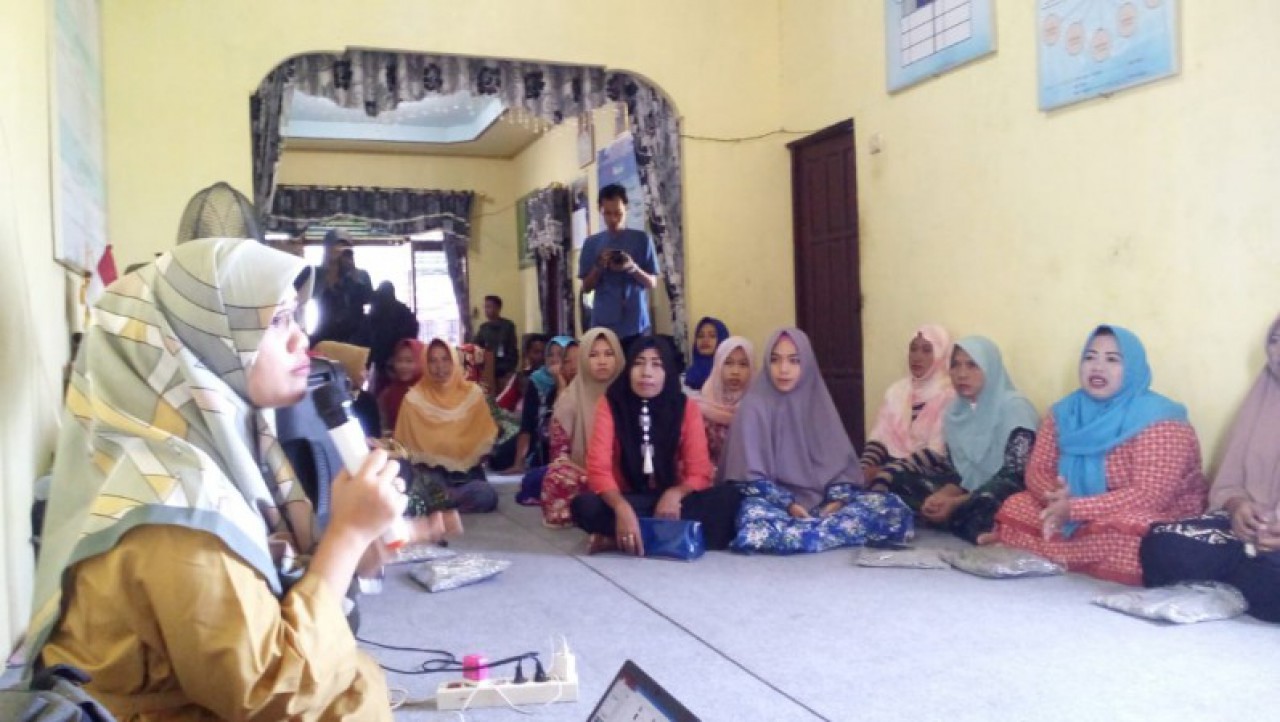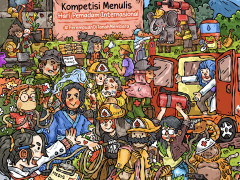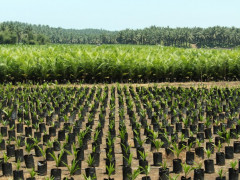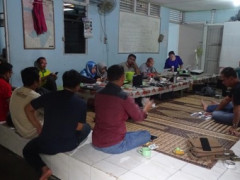From Minnesota to Indonesia
By Admin Pantau GambutGiving Hope to the Village
Ernawati (47) was restless. She couldn't wait for Friday, 21 September 2018 because on that day, she and the residents of Paramaian Village, North Daha Subdistrict, South Kalimantan would take part in a training to make handicrafts from ilung, the local name for water hyacinth. This plant is very familiar to people who live on the riverbanks in South Kalimantan.
However, the presence of water hyacinth on a large scale is very disturbing, especially if it grows on rivers that are used for water transportation. Moreover, water hyacinth grows very quickly. It covers the rivers during high tides.
People try to make the troublesome plant into something more useful, which is handicrafts. Certain skills are needed to process water hyacinth. Villagers, including Ernawati, hope to acquire this craft-making skill through the training held in their village.
The training was held on 21 September 2018 in Paramaian Village as part of the village planning workshop activities organized by the Peat Restoration Agency (BRG) and Paramaian Village government. The trainers came from the neighboring district, Hulu Sungai Utara, which is known as a center for handicrafts made from water hyacinth and has exported products to Europe, Singapore, Malaysia, and Japan.
The training lasted one full day. The women, who came from four neighborhood units (RT) in Paramaian Village, were enthusiastic about participating in this training. Besides introducing the potential of water hyacinth, the trainer also showed the process of making handicrafts.
Solfani, a facilitator of the Peat Care Village program, which is part of the BRG program, said that the people had been waiting for this kind of training for a long time.
“The villagers always talked about their desire to get this training. The village head and heads of the neighborhood units also gave a very positive response because the residents really hope to make crafts from water hyacinth. Therefore, water hyacinth will have economic value and help their finances," said Solfani.
Solfani explained that many residents wanted to participate in the training. However, since the participants were limited to 30 people, each neighborhood unit could only send seven representatives.
The head of neighborhood unit 4 of Paramaian Village said that after the training, the residents planned to form a handicraft group called 'Kayuh Baimbai'. Armed with the knowledge gained from the training, the residents wanted to make bags, sandals, tissue boxes, and wallets made from water hyacinth.
Dermawati Sihite, a BRG representative who attended the training in Paramaian Village, supported the residents' wishes.
“The purpose of this training is for women to help their household economy by making handicrafts. And there will be no difficulties because the raw material is abundant,” she said.
At almost the same time, several Peat Care Villages in South Kalimantan also held various training. For example, in Kaludan Kecil, Pinang Habang, Mawar Sari, Pinang Kara, and Hapalah villages. In Hapalah Village, BRG held a training to make iwak rabuk or shredded fish meat made from three spot gourami, which is easy to find in peatlands and swamps around the village.
“People are enthusiastic about participating in the training. This is another way for them to earn a living after some of their lands can’t be cultivated because an oil palm plantation company claims it as theirs,” said Rudy Fahrianoor, facilitator of the Peat Care Village program in Hapalah.
Community training and empowerment is only the initial stage. The more difficult part is to make the training, such as making handicrafts from water hyacinth, can actually be utilized to improve the quality of their lives.
As Ernawati said after the training, she hoped that the information and skills to make handicrafts would not only end up as mere knowledge.
"Hopefully there will be follow-up actions so that we can help our household economy with the knowledge gained from the training," she said.
.




